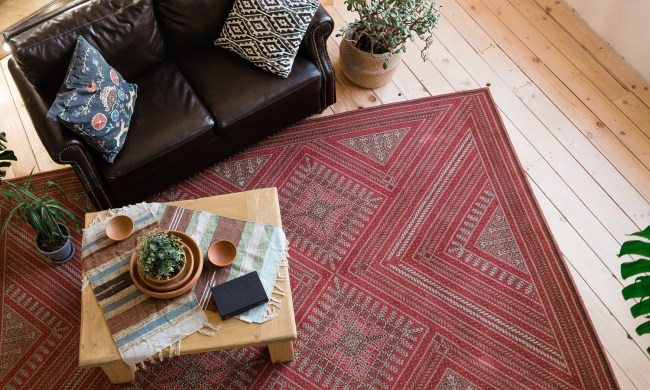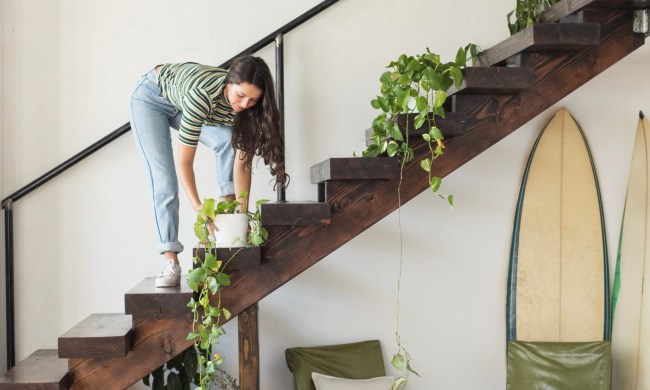When it comes to redecorating, a fresh coat of paint can really transform a room. Painting is a big project, though, and even preparing the room by cleaning walls and taping off the area can be exhausting. If you have some big painting projects coming up, it’s a great idea to invest ahead of time in some essential painting supplies that will help you get the job done smoothly and effectively. We’re going to help you build your essential painting kit with these seven products so you can have the best painting supplies on hand to tackle your painting project like a pro.
Drop cloths
Covering your floors and other surfaces is essential for preventing paint spills and splashes. Some of the best drop cloths are made with a canvas material that is durable and tear-resistant for extended use. Some brands have a non-slip backing that helps avoid slippage, which can leave areas unprotected and even cause an injury to painters due to a fall.
Trisodium phosphate (TSP) solution
Painting over dirty walls, particularly in the kitchen and bathroom, can lead to some frustrating issues down the road like blistering paint or even mold. Avoid these woes by cleaning the walls first with a powerful solution like Trisodium phosphate. TSP cleans the most stuck-on grime off of your walls quickly and efficiently. Don’t forget to stock up on sponges and rags that you’ll need to apply the solution to the walls.
Oscillating fans
Once you’ve cleaned the walls, it’s important to make sure they are thoroughly dried before beginning to paint. Moisture on your walls can also lead to problems with mold and peeling paint. It’s a good idea to set up some oscillating fans in the room after the walls have been cleaned so that you can increase the airflow and dry the walls faster.
Painter’s tape
It’s not truly a painting session without some painter’s tape. While there are a few different options for tape, including various adhesive levels for surfaces of different vulnerability, the standard blue painter’s tape will work fine for taping off floorboards, windows, and doors.
Brushes, rollers, and paint trays
Of course, you’ll need the obvious essentials for your painting job, and that includes brushes, rollers, and paint trays. While paint rollers are great for slapping down paint over a large surface, remember to have some paintbrushes on hand in varying sizes. That way, you can get into harder-to-reach areas and corners with ease.
Painter’s comb
If you’ve ever painted with large paintbrushes before, you know that cleaning the paint off after each use is a vital practice. If too much paint is left caked inside the bristles, the paint will harden and render the brush unusable for future jobs. A painter’s comb uses metal bristles to help brush the paint effectively out of the bristles while it’s still wet. This product will save you some money in the long run on replacement paintbrushes.
Paint sprayer
Using a paint roller on an enormous surface can be exhausting. Avoid some sore muscles and fatigue by investing in a paint sprayer for bigger projects. You can apply a coat of paint to a large surface five times as fast as a paint roller, and a sprayer is more effective at painting textured surfaces. Using a paint sprayer is a bit less precise than using a roller or a brush, so you’ll need to prep the room a bit more to be sure surfaces that are not being painted are completely covered.
Whether you’re upgrading just one room or planning an in-depth remodel of your entire home, fresh coats of paint are essential to giving new life to your space. If you’re planning a tough, DIY painting session soon, you need the right tools. Make sure you’re prepared for the big job ahead with the products on this list so that you can get that paint slapped up the right way the first time.



